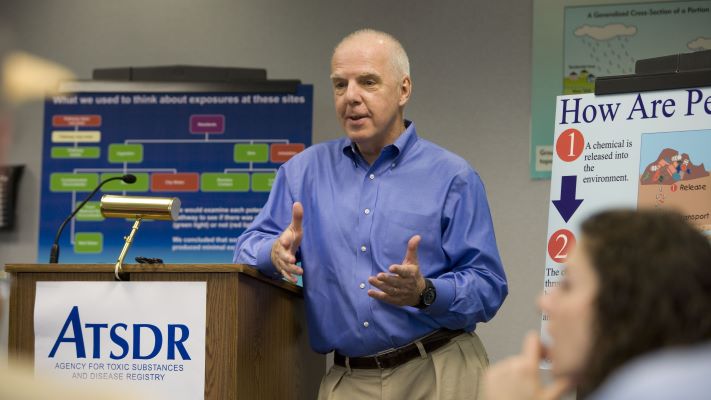At a glance
A key component of public health work involves sharing information. Sharing information that is specific, concrete, easy to understand, and transparent can enhance the community’s understanding and awareness of the history and extent of environmental contamination, the potential risks associated with exposure, and ATSDR’s role in the public health response.

Overview
Information can help empower people to act. In addition, information can prevent stress associated with not understanding who’s involved and what’s going on. Setting clear expectations for what the community should and should not expect throughout the course of your engagement is key. When choosing how to share information, consider your goals and the intended outcomes of the communication.
Here are some formats for sharing information with communities:
- Informal conversations and phone calls
- Site visits
- Briefings and presentations
- Public meetings, public availability, and poster sessions
- Dedicated phone lines and email addresses
- Booths or tables at local public events
Keep in Mind
Involve the community early and often in your public health work. This will foster trust and give you the insight you need to target the right audience and craft tailored messages.
Where to Start
- Define your audience as early as possible. Consider identifying audiences with different needs, such as community members, state and local partners, and other interested allies like local health care professionals, etc.
- Establish two sets of objectives for each identified audience: (1) what you wish to accomplish by sharing information and (2) how you want them to feel once they have that information.
- Based on the above, determine the content and format of your communication.
- Develop communication materials that include a clear description of ATSDR's role and process. (See activities: Maintaining Collaboration and Communication with Community Stakeholders and Developing Communication Materials and Identifying Communications Channels)
- Incorporate risk communication principles into your communication materials and messages.
Tips from the Field
Key practices for success
Make sure what you are communicating is accurate, clear, easy to understand, and honest. Be prepared to answer challenging questions. Consider how information about scientific uncertainty will be received by community parters and bring in subject matter experts to discuss information.
Areas to exercise caution
Be careful not to speak on behalf of other organizations or government agencies when sharing information with the community. Consider inviting representatives of other agencies who are involved with or who can help the community.
Risks to avoid
Do not overpromise what you or ATSDR can do for any one individual or for the community.
Additional Resources
ATSDR Community Engagement PowerPoint Template (ATSDR). A template for a PowerPoint presentation that can be used at community meetings.
ATSDR Communication Toolkit: Guide to Materials Development (ATSDR). Guidance on different types of materials that can be developed and how to apply emergency risk communication principles.
Community Engagement Guide (Boston Metropolitan Area Planning Council). A guide that provides a framework for creating a public participation strategy.

